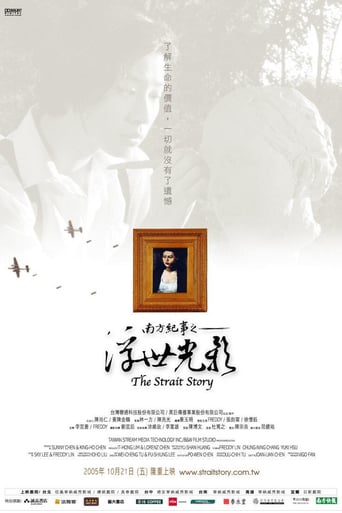

Far from Perfect, Far from Terrible
... View MoreDid you people see the same film I saw?
... View MoreI am only giving this movie a 1 for the great cast, though I can't imagine what any of them were thinking. This movie was horrible
... View MoreGreat movie. Not sure what people expected but I found it highly entertaining.
... View MoreI saw this at the Taiwan Film Festival at Berkeley, having had high expectations for this film after seeing the summary in the program. It turned out for me to be the biggest disappointment of the festival, with an interesting premise undone by weak acting, poor characterization, and an unambitious script.The film is a bio-pic presented through the framing story of an art restorer, who is given the task of restoring paintings by Taiwanese artist Huang Ching-cheng. Through her efforts she uncovers the life of the artist, who underwent his artistic development in Japan before dying aboard a Japanese vessel sunk by American torpedoes. In the process, she finds the inspiration and strength in Huang's story to overcome her own depression and recurring illness.Shot in high quality, most likely digital video, the film makes a good initial impression before being pulled back down by the weak writing. The two leads, Shou-Shou the art restorer and Huang the artist, become nothing more than figureheads for their respective eras: Shou-Shou one of historical and ancestral reverence, and Huang of some ideal of "artistic integrity" that is never delved into in any great detail. The audience is never given any reason to admire Huang, who spends most of the movie either engaged in pretentious debate with his university buddies, or hard at work on yet another sculpture or painting, or locked in petty disputes with his Japanese girlfriend. We are instead supposed to instinctively elevate Huang, to admire him for his artistic vision when the film gives us no evidence of any vision whatsoever. Perhaps the real-life background of Huang's death is supposed to give audiences the requisite sympathy; in any case the film does barely anything to develop that sympathy itself.The presentation of Huang undermines the audience's appreciation of the effect he is supposed to have on Shou-Shou, whose involvement in his art supposedly inspires her to greater things. Everything about Shou-Shou's character reeks of a filmmaker's construct, a character who exists solely and baldly as a vehicle for the filmmaker's agenda. We never get a sense of why Huang is a man to be admired, why he is so important to this woman's life. Her arguments with her boyfriend, who is concerned that her constant work on the restoration is deteriorating her health, ring hollow because there is no impetus for her obsessive admiration. The final scenes, where after a big fight her boyfriend finally "sees the light" and acknowledges Huang as a great man while looking on himself as inadequate in comparison, after which we are shown Shou-Shou visiting Huang's grave with the requisite swelling orchestral score, become a display of almost necrophiliac worship and obsession over some "lost ideal" that modern Taiwanese should look back on and revere.The acting is almost comically inept all around, with Shou-Shou vacillating between overenthusiastic vigor, ineffectual anger, and crumpling to the floor from illness. Huang basically holds the same half-smiling, vaguely smug facial expression for the entire film, and his girlfriend appears uncomfortable in nearly every scene.The film seems like an attempt to the recreate the impact of Titanic or Schindler's List with an added element of Taiwanese historical and cultural significance. Instead, it comes across as a collection of contextless highlights from Huang's life, bookended by unambitious moralization. The director, a descendant of Huang, is perhaps too close and too familiar to the subject matter, and her personal attachment may have clouded her judgment as to how the subject should be treated. Judging from the warm reception and applause at the showing, especially from non-Asians, I would say this is the type of historical drama people want: steeped in history and culture, and taking a no-risk, reverential approach to the presentation of the subject matter. In contrast, the infinitely more complex and intellectually stimulating Anlian Taohuayuan (Secret Love for the Peach Blossom Spring) was met with a decidedly chilly reception; perhaps the lack of a clear and uncomplicated stand frightens viewers. In my mind, though, the devotion and reverence preached in this film to a figure it is not clear Shou-Shou even fully understands, and that the audience has no way of fully understanding through this fragmented film, is far more disturbing.
... View More